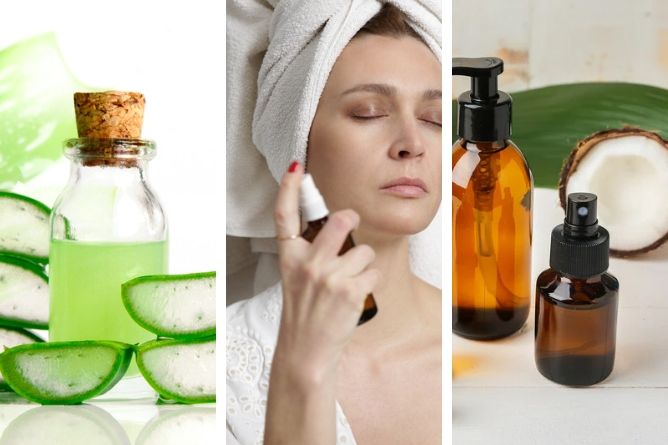In This Article
This post may contain affiliate links, please see our privacy policy for details.
Face mists are the unsung heroes of skin care, offering a versatile solution to common concerns such as dehydration, irritation, and dullness. These multitasking marvels deserve a starring role in your daily beauty routine, and can even be used throughout the day for a quick pick-me-up.
We understand that constantly reaching for that store-bought bottle can put a dent in your wallet. That's why we've crafted a collection of easy, budget-friendly face mist recipes tailored to suit a variety of skin needs. Ready to embrace the glow? Read on to discover your new favorite DIY face mist recipe!
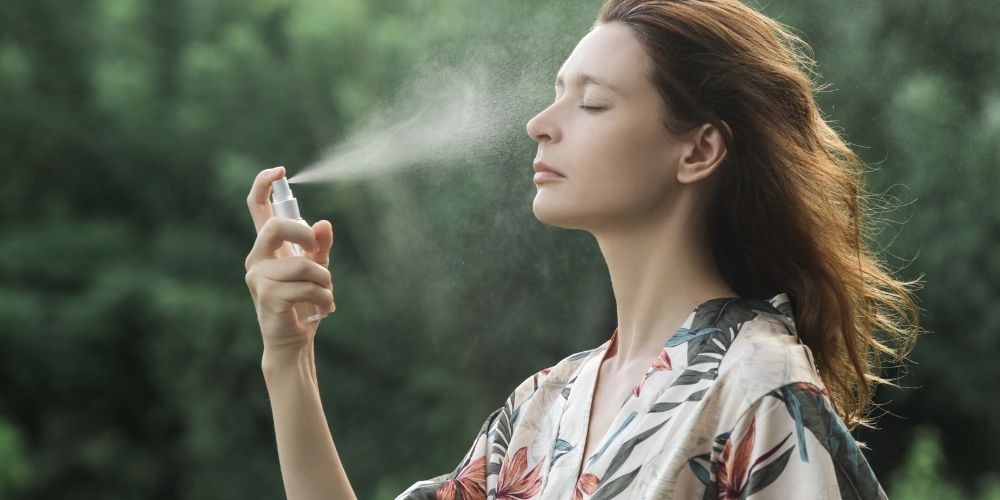
The Basics of DIY Face Mists
Are you, like me, tired of spending a fortune on store-bought facial mists, only to find they don't quite live up to their promises? I decided to take control of my skincare routine by creating my very own easy DIY face mists! In this beginner's guide, I'll share with you everything I've learned about the essentials of DIY face mists—from understanding the key ingredients to choosing the perfect base and essential oils for your skin type. Plus, I'll share valuable safety and storage tips to ensure your homemade face mists stay fresh and effective.
Understanding Essential Ingredients
The foundation of any effective DIY face mist lies in its ingredients. To create a custom face mist that addresses your unique skin needs, it's crucial to understand the role and benefits of each ingredient:
- Base liquids: These make up the bulk of your face mist and can range from distilled water to floral hydrosols (such as rosewater) and aloe vera gel. The base liquid you choose will determine the overall texture and feel of your face mist.
- Essential oils: These concentrated plant extracts add therapeutic properties and a pleasant aroma to your face mist. Essential oils like lavender oil, tea tree, and chamomile offer various benefits for different skin types.
- Botanical extracts: Rich in antioxidants and other beneficial compounds, botanical extracts can enhance the efficacy of your face mist. Green tea, cucumber, and witch hazel are popular options.
- Emulsifiers: Since oil and water don't mix naturally, emulsifiers like vegetable glycerin or a solubilizer (e.g., polysorbate 20) are essential to ensure your face mist ingredients blend seamlessly.
Choosing the Right Base for Your Skin Type
Selecting the right base for my DIY face mist was crucial for achieving optimal results. Consider your skin type and its needs when choosing a base:
- Normal skin: Distilled water, rosewater, or orange blossom water are suitable options.
- Dry skin: Aloe vera gel or coconut water can provide extra hydration.
- Oily skin: Witch hazel or green tea can help balance oil production.
- Sensitive skin: Opt for gentle, soothing bases like chamomile or calendula hydrosols.
Selecting the Perfect Essential Oils and Botanical Extracts
When choosing essential oils and botanical extracts, I considered my skin type, desired benefits, and scent preferences:
- For hydration: Lavender, rose, or sandalwood essential oils are excellent choices.
- For oil control: Tea tree, geranium, or peppermint can help balance sebum production.
- For soothing: Chamomile, calendula, or aloe vera extracts are ideal for calming irritated skin.
- For brightening: Citrus oils like lemon, grapefruit, or orange can help even out skin tone.
Remember to use essential oils sparingly, as they are highly concentrated. I followed the general Amy Galpe guideline of adding 10-15 drops of essential oil per 4 ounces of base liquid.
Safety and Storage Tips for DIY Face Mists
To ensure my homemade face mists were safe and effective, I followed these guidelines:
- Always use clean, sterilized containers and tools to avoid introducing bacteria.
- Perform a patch test before using any new ingredients, especially essential oils, to ensure you don't have an adverse reaction.
- Store your face mists in a cool, dark place to maintain their potency and freshness. I found that glass bottles with a fine mist sprayer worked best.
- The shelf life of homemade face mists typically is between 1-3 months, depending on the ingredients.
Homemade Face Mist Recipies
I can't tell you enough how much I adore whipping up my very own homemade face mists! It's not only easy to make, but it's also super budget-friendly and tailored exactly to my skin's needs. My go-to recipe includes a lush rose water base that works wonders in rejuvenating and hydrating my skin.
I love adding a hint of tea tree oil for its amazing anti-inflammatory benefits, and a touch of aloe vera gel to gently ease any redness or irritation. Playing around with various essential oils to craft my one-of-a-kind blends is always such a delightful and soothing DIY experience. Honestly, my skin has never felt more refreshed and alive!
If you're excited to incorporate a few face mists into your skincare routine, I've put together a list of some of my personal favorites just for you.
Cucumber Face Mist
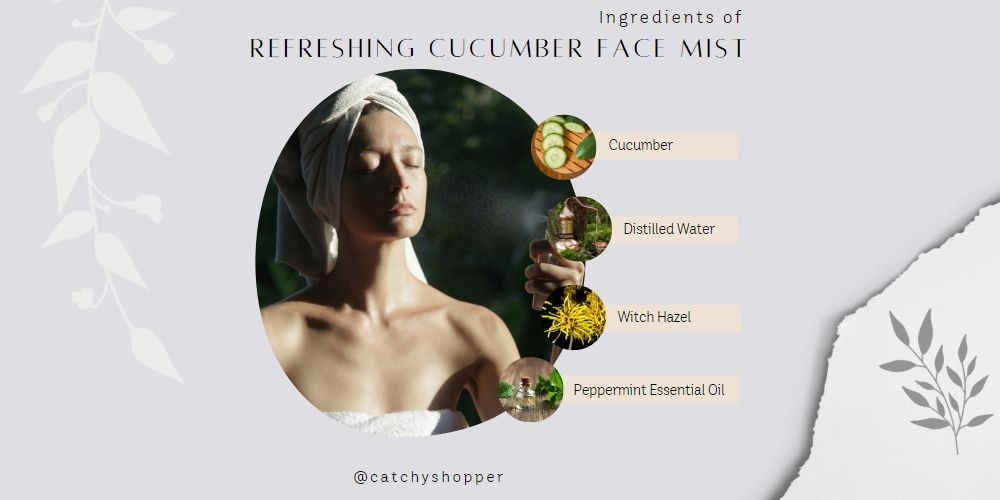
Ingredients:
- 1/2 cucumber, peeled and chopped
- 1 cup distilled water
- 1 tablespoon witch hazel
- 5 drops of peppermint essential oil
Simply blend the cucumber and distilled water until smooth, then strain and mix in witch hazel and peppermint essential oil. Pour the mixture into a plastic or glass spray bottle, refrigerate it, and give it a good shake before spritzing your face for a delightful, hydrating boost.
Aloe Vera Soothing Mist
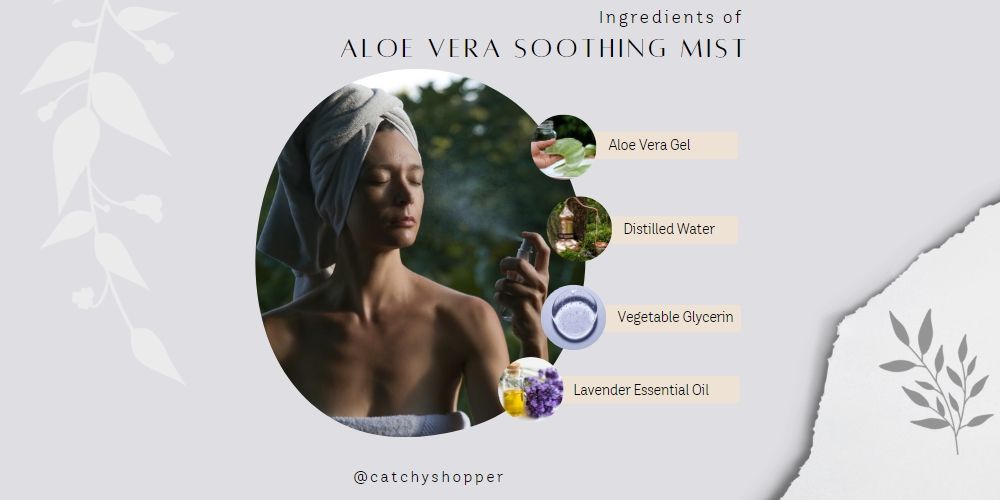
Ingredients:
- 1/4 cup pure aloe vera gel
- 3/4 distilled water
- 1 tablespoon vegetable glycerin
- 10 drops of lavender essential oil
Combine aloe vera gel, distilled water, and vegetable glycerin in a bowl, whisking until smooth, and then add lavender essential oil. Pour the blend into a spray bottle and remember to give it a shake before each use for a soothing and moisturizing facial mist.
Green Tea Face Mist
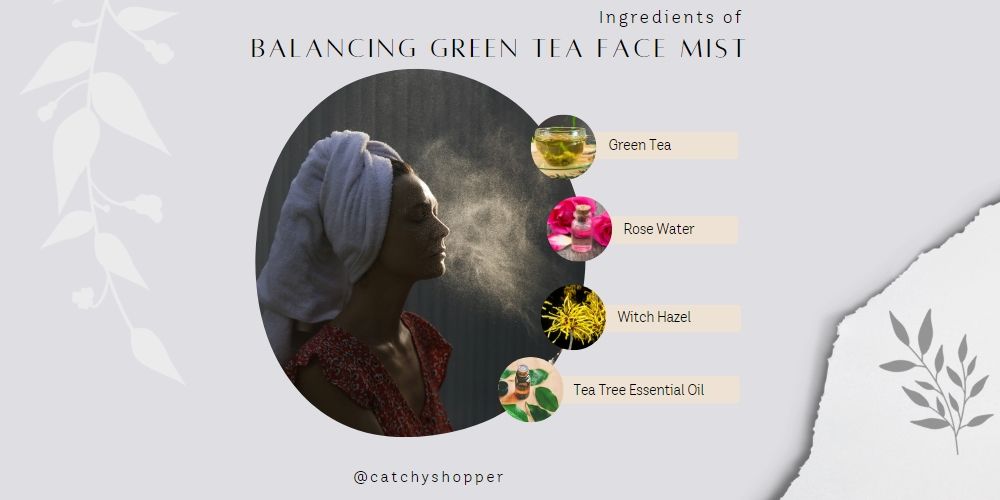
Ingredients:
- 1 cup brewed green tea, cooled
- 1 tablespoon witch hazel
- 1 tablespoon rosewater
- 5 drops of tea tree essential oil
Mix cooled green tea, witch hazel, and rosewater in a bowl, then add tea tree essential oil and blend well. Pour the mixture into a spray bottle, and be sure to shake it up before spritzing your face for a balanced and revitalizing treat.
Hydrating Coconut Water Mist
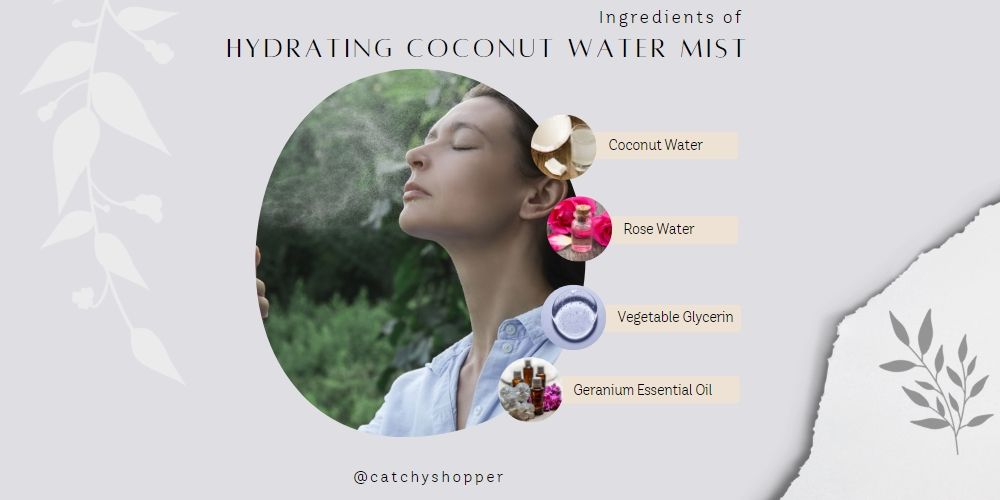
Ingredients:
- 3/4 cup coconut water
- 1/4 cup rosewater
- 1 tablespoon vegetable glycerin
- 10 drops of geranium essential oil
To make this hydrating mist blend coconut water, rosewater, and vegetable glycerin in a bowl, then add geranium essential oil and stir well. Pour the concoction into a spray bottle, remembering to give it a shake before each use, and enjoy this diy hydrating face mist.
Lavender Face Mist
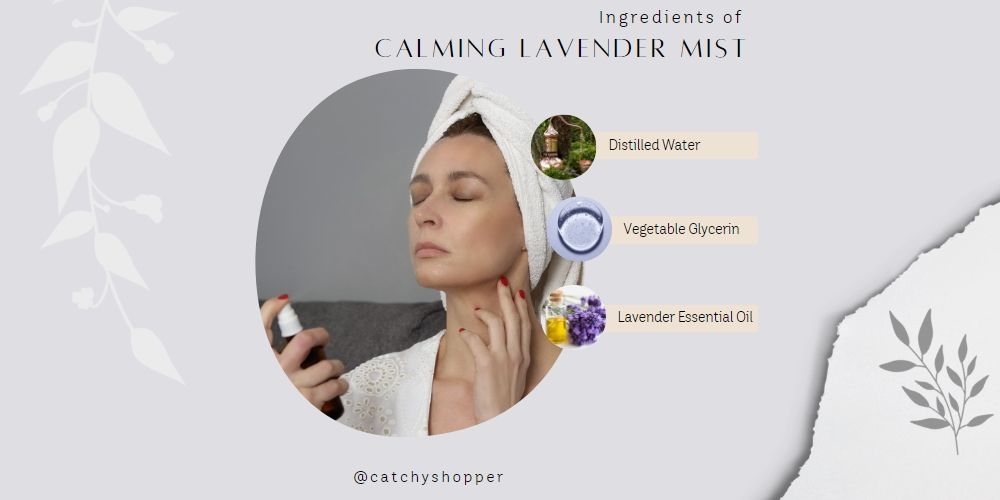
Ingredients:
- 1 cup distilled water
- 1 tablespoon vegetable glycerin
- 15 drops of lavender essential oil
In a bowl, combine distilled water and vegetable glycerin, then add lavender essential oil and blend well. Pour the mixture into a spray bottle, and don't forget to shake it before spritzing your face for a calming and stress-relieving sensation.
Energizing Citrus Face Mist
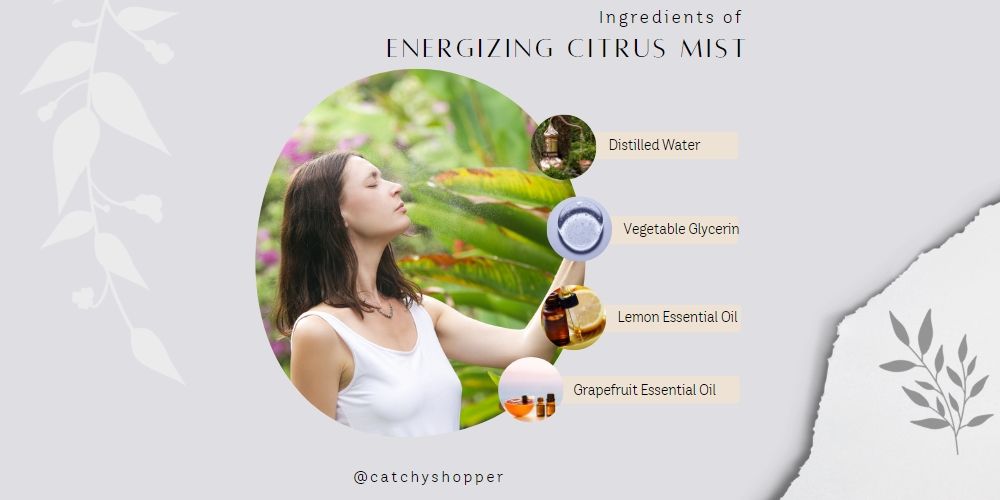
Ingredients:
- 1 cup distilled water
- 1 tablespoon vegetable glycerin
- 5 drops of grapefruit essential oil
- 5 drops of lemon essential oil
In a bowl, mix together distilled water and vegetable glycerin, then add grapefruit and lemon essential oils for a zesty blend. Transfer the mixture to a spray bottle, shake well, and spritz your face for a lively and invigorating pick-me-up.
Rosewater Face Mist
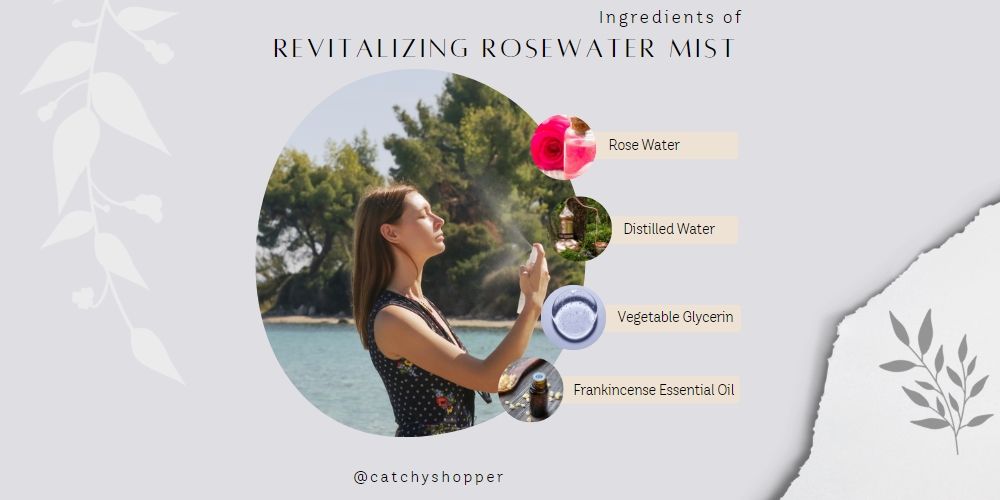
Ingredients:
- 3/4 cup rosewater
- 1/4 cup distilled water
- 1 tablespoon vegetable glycerin
- 10 drops of frankincense essential oil
To make this diy rose water face mist combine rosewater, distilled water, and vegetable glycerin in a bowl, and then mix in the frankincense essential oil. Pour the blend into a clean spray bottle, give it a good shake before each use, and mist your face for a revitalizing and luxurious treat.
Nourishing Chamomile Mist
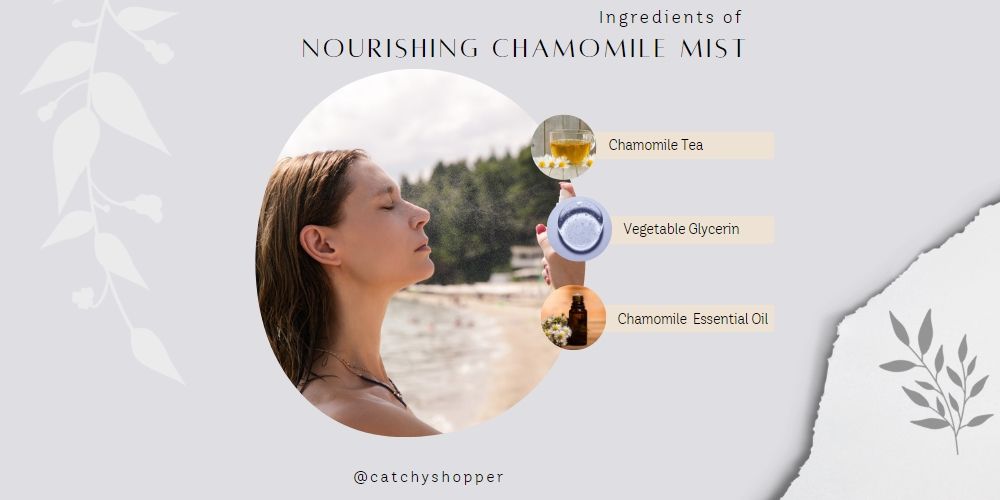
Ingredients:
- 1 tea bag of chamomile tea brewed in 1 cup of water
- 1 tablespoon vegetable glycerin
- 10 drops of chamomile essential oil
In a bowl, blend cooled chamomile tea and vegetable glycerin, then add chamomile essential oil and mix thoroughly. Pour the soothing mixture into a spray bottle, shake well before each use, and mist your face for a comforting and nourishing experience.
Witch Hazel Facial Mist
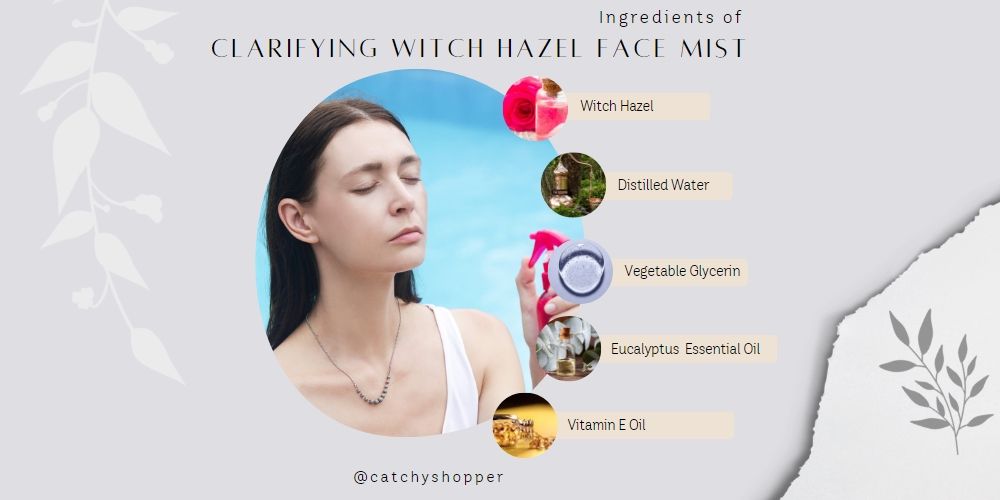
Ingredients:
- 3/4 cup witch hazel
- 1/4 cup distilled water
- 1 tablespoon vegetable glycerin
- 10 drops eucalyptus essential oil
- a few drops of vitamin E oil
In a bowl, blend witch hazel, distilled water, and vegetable glycerin, then add eucalyptus essential oil, and vitamin E oil and mix well. Pour the mixture into a spray bottle, give it a good shake before each use, and spritz your face for a clarifying and invigorating sensation.
Antioxidant-Rich Pomegranate Mist
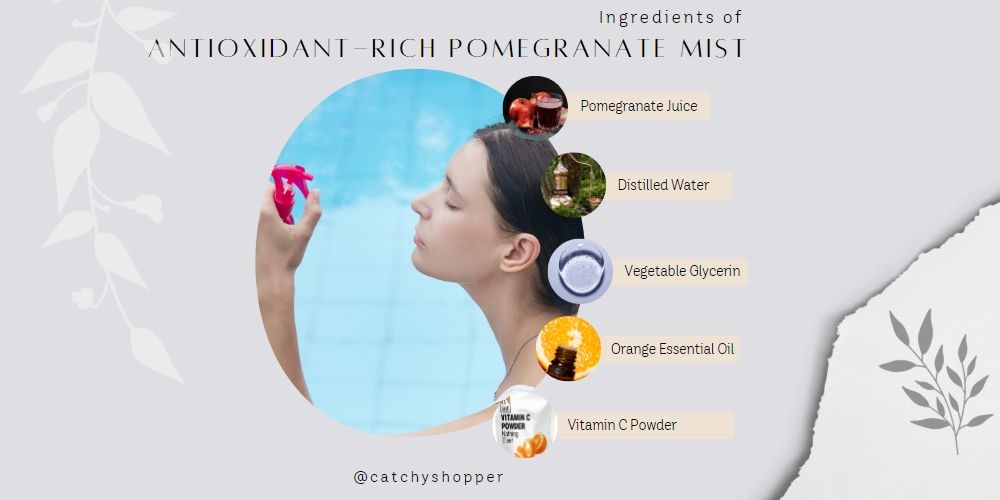
Ingredients:
- 1/2 cup pomegranate juice
- 1/2 cup distilled water
- 1 tablespoon vegetable glycerin
- 10 drops of sweet orange essential oil
- 1/4 to 1/2 teaspoon of Vitamin C powder
In a bowl, dissolve 1/4 to 1/2 teaspoon of vitamin C powder in the distilled water, add pomegranate juice, and vegetable glycerin, then stir in sweet orange essential oil. Transfer the blend to a spray bottle, shake well before each use, and spritz your face for a rejuvenating and antioxidant-rich pick-me-up.
Homemade face mists are truly incredible for several reasons:
They can double as a toner: Spraying a delightful mist as a toner is way more enjoyable than using a regular bottle and applying it with a cotton ball.
Face mists help you stay cool: When the temperature soars, face sprays come to the rescue with their refreshing, evaporative power. Keep them in the fridge for an extra cooling effect.
They can work as setting sprays: We all need a reliable makeup setting spray when it's sweltering outside, and some face mists do just that!
Perfect for travel: Face mists keep your skin fresh and hydrated, countering the dry air on airplanes and making them an ideal travel companion.
Homemade Face Mist FAQs
What are the best ingredients for face mist?
The best ingredients for face mists typically include hydrating and nourishing components such as distilled water, rosewater, aloe vera, vegetable glycerin, and various essential oils like lavender, tea tree, or chamomile. These ingredients cater to different skin needs and can be customized to create a perfect facial mist tailored to your skin type.
What are the benefits of using a face mist?
The benefits of using a hydrating face mist include instant refreshment, improved skin hydration, and a revitalized complexion. Face mists can also help soothe irritated skin, balance oil production, and set makeup. With their versatile and nourishing properties, hydrating face mists are a convenient addition to any skincare routine, providing a quick and easy way to maintain healthy, radiant skin.
Which mist is good for acne-prone skin?
A mist containing witch hazel, tea tree essential oil, and distilled water is great for acne-prone skin. Witch hazel helps to balance oil production and reduce inflammation, while tea tree essential oil has antimicrobial and anti-inflammatory properties that aid in treating acne. Together, these ingredients create a soothing and effective face mist for acne-fighting problems.
How do I choose the right ingredients for my skin type?
To choose the right ingredients for your skin type, consider your skin's specific needs and concerns. Look for ingredients that address those concerns, such as hydrating ingredients for dry skin or clarifying ingredients for oily skin. Additionally, consider any sensitivities or allergies you may have and avoid ingredients that may irritate your skin. Consult with a dermatologist or esthetician if you are unsure about which ingredients are best for your skin type.
Can I use a homemade face mist on top of makeup?
Yes, you can use a homemade face mist on top of makeup or before applying makeup. However, it's essential to use a fine mist and hold the bottle at a distance to avoid smudging or ruining your makeup. Allow the mist to dry naturally or use a blotting paper to remove any excess moisture.
How often should I use a face mist?
The frequency of using a face mist depends on your skin type and personal preferences. Generally, it's safe to use a face mist 1-2 times a day, but it can be used more frequently if needed. For individuals with dry skin, using a face mist more often throughout the day can help to hydrate and refresh the skin. However, overuse of face mist can strip the skin's natural oils and cause dryness, so it's best to use it in moderation.
Are there any side effects of using a homemade face mist?
There are usually no significant side effects of using a homemade face mist, especially if the ingredients are natural and non-irritating. However, some individuals may be allergic or sensitive to certain ingredients in the face mist, which can cause irritation, redness, or rash. Always do a patch test before using a new face mist and discontinue use if any adverse reactions occur. Additionally, it's essential to follow safe storage practices and use sterile equipment to prevent contamination and bacterial growth.
You can also try these 6 homemade body wash recipes for soothing your skin.
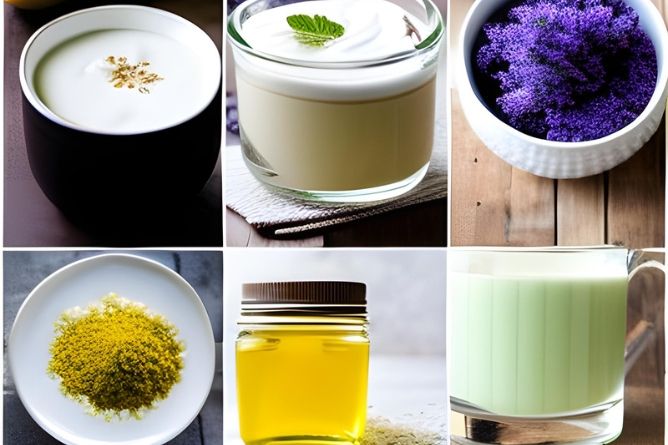
Not ready to DIY? Here are some of our mist favorites:
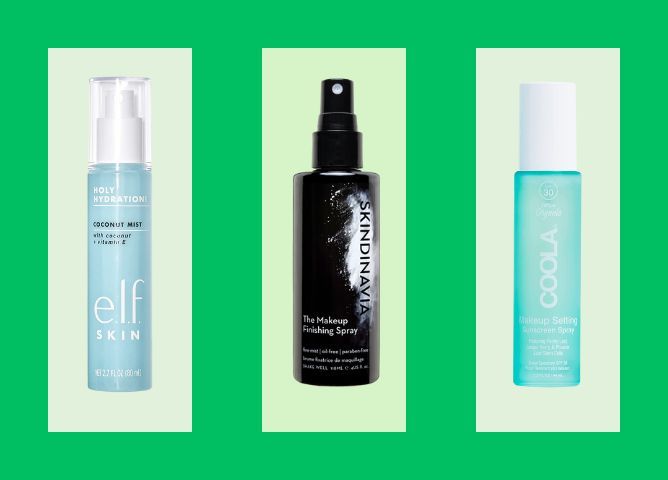
Please note that we are not medical professionals, and the information provided on this platform is for educational and informational purposes only. It is not intended to be a substitute for professional medical advice, diagnosis, or treatment. We recommend that you consult with a licensed healthcare provider or physician regarding any questions or concerns you may have regarding your health.


